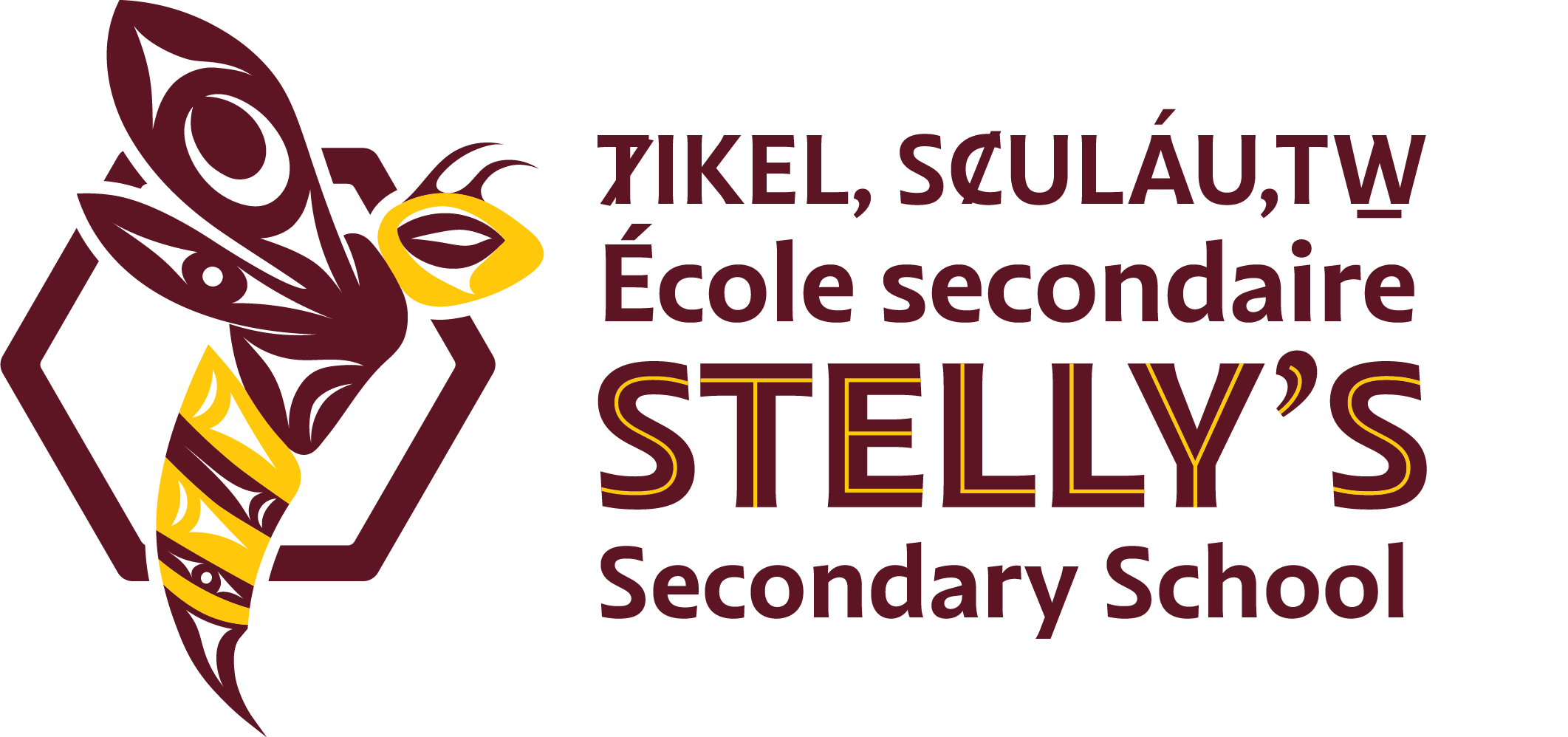School Goal Two
To identify barriers within our school preventing success for our Indigenous Learners.
If we can identify barriers preventing Indigenous learners from achieving success, will we be able to strategically address these barriers and therefore begin to see an increase in our Literacy and Numeracy Assessment scores, students choosing the Foundations/Precalculus pathways, graduation/completion rates, and enrolment in post-secondary?
Stelly’s population is 13.4% Indigenous students which is 50% of the district’s Indigenous population at the high school level. The 2022/2023 Aboriginal Students: How Are We Doing? shows that our Indigenous students in Saanich School District disproportionally under perform in Numeracy and Literacy compared to their non-Indigenous counterparts within the district. At Stelly’s we have seen an improvement on the Literacy 10 Graduation Assessment as well as in English 10-12 course marks over the last 3 years, and we have yet to see these improvements in the Numeracy/Math realm. Additionally, we consistently see Indigenous students choosing the Workplace Math pathway rather the Foundations/Precalculus pathway at a higher rate than their non-Indigenous peers. This limits their first step into post-secondary as many programs require Foundations 11 or Precalculus 11 for direct entry. Stelly’s data tell us that our 2020-2021 school goal that focused on literacy has provided growth for Indigenous learners in literacy but the achievement gap in numeracy experienced by our Indigenous Learners needs to be a continued focus.
Additionally, the district’s 6-year and 5-year completion rates are much lower for Indigenous students and our district’s rates are on the lower end of the provincial range.
Data collected from our student focus groups and individual empathy interviews revealed that Stelly’s students, Indigenous and non-Indigenous, feel that while the curriculum is relevant, the lesson structure (i.e. stand and deliver) is not meeting the needs of today’s learner nor is it preparing them for future education and/or employment realities (where discussion, collaboration, etc. are critical and sought-after skills).
At Stelly's, our core belief is that, given appropriate support and opportunities, all learners can attain success. The key to learner success lies in fostering a culturally safe, compassionate, and inclusive learning community that actively cultivates strong relationships among every member of our school community, including students, staff, and families.
This goal and focused inquiry questions align directly to our district strategic priority of Indigenous Learner Success. Additionally, our intended approaches are deeply connected to the First Peoples Principles of Learning.
First Peoples Principles of Learning

The Indigenous Learner Success Goal needs to ensure that:
- Learning requires exploration of one’s identity.
- Learning is holistic, reflexive, reflective, experiential, and relational (focused on connectedness, on reciprocal relationships, and a sense of place).
- Learning recognizes the role of Indigenous knowledge.
- Learning is embedded in memory, history and story.
- Learning involves patience and time.
Using the AIM Tier 1 as the lens to analyze the foundational supports we are currently providing to Indigenous students and their families.
Welcome – Social & Physical Environments. At Stelly’s:
- We have completed renovations to move the Cultural Room to the front of the school to mark its presence and importance in our school. This space is easily accessible to families, community and elders that want to visit our school.
- Our room signs are written in SENĆOŦEN, French and English, and include a QR code which links to a pronunciation of the word in SENĆOŦEN recorded by the Indigenous leadership students.
Include – Student Engagement & Belonging. At Stelly’s:
- We continue to make individual phone calls to families at the beginning of the year inviting them to our Welcome Back BBQ.
- We, with the help of Indigenous Education, have access to a small bus to transport Indigenous students to and from sporting events and home after homework club sessions.
Understand – Mental Health Literacy & Knowing your Students. At Stelly’s:
- We employ Indigenous Support Staff (2.0 FTE), one full-time Indigenous Support Liaison, and a part-time support person in the role of a life coach to support our graduating Indigenous students as they transition to post-secondary education and the world of work. This life coach position is funded through and RBC grant.
Promote – Curriculum, Teaching & Learning. At Stelly’s:
- We offer Indigenous Leadership, SENĆOŦEN and are offering a new BAA course which we believe will allow students to see the W̱SÁNEĆ culture reflected in the walls of our building.
- We are currently offering 14 sections of courses that satisfy the Indigenous-focused course graduation requirement as well as two sections of Indigenous Peoples Art.
Partner – Home, School, Community Partnerships. At Stelly’s:
- We are actively looking for ways to connect with Indigenous families. For example, this year we held a Welcome Back BBQ for our Meet-the-Teacher evening, and we will be hosting a Course Selection/Grad Planning Evening in community to provide the information families may need to help their students choose their courses. We are also considering a community dinner or tea to strengthen connections between the W̱SÁNEĆ community and the school.
- We often connect with our Indigenous Family Advocate and external support agencies (ie ICYMH) to ensure families and students have the support they need.
Over the 2025-26 year, we will track progress on the initiatives identified in this year's plan. More specifically, we will continue to look at the following:
- Attendance rates, selection of high-level math courses, 5-year completion rates, Numeracy scores, and Indigenous enrolment growth over time.
FNESC has produced an updated toolkit called Attendance Counts! that reinforces the connection between student attendance and student success. We plan to investigate this link, to monitor Indigenous student attendance, and to introduce intervention strategies with the goal of reducing lost learning time for Indigenous students. We believe that if we can get Indigenous students to attend and engage in their learning on a more consistent basis, we will see increased learner success across all our measurement domains (e.g. course completion, higher literacy and numeracy scores, higher graduation rates).





